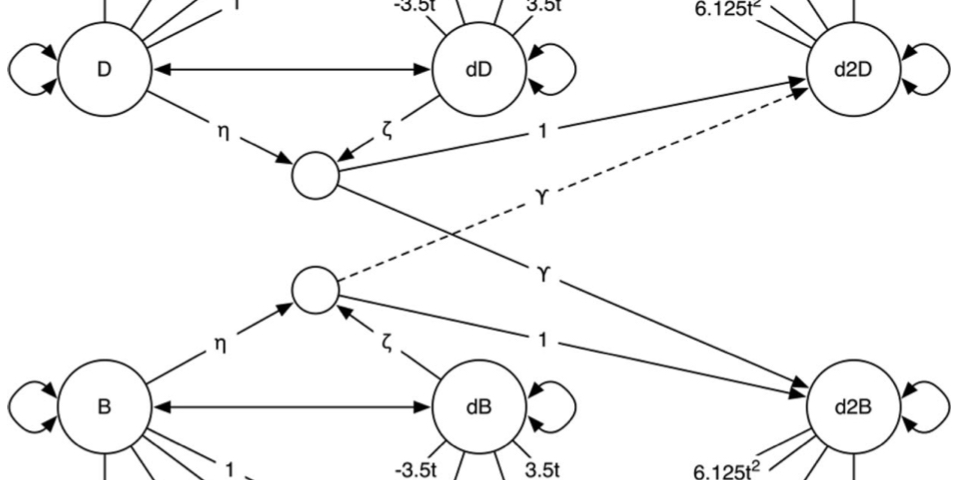This study investigated reciprocal relationships between adolescent mothers and their children’s well-being through an analysis of the coupling relationship of mothers’ depressive symptomatology and children’s internalizing and externalizing behaviors. The present study used dynamical systems to model time continuously, which allowed for the study of dynamic, transactional effects between members of each dyad.
Abstract
The present study investigated reciprocal relationships between adolescent mothers and their children’s well-being through an analysis of the coupling relationship of mothers’ depressive symptomatology and children’s internalizing and externalizing behaviors. Unlike studies using discrete time analyses, the present study used dynamical systems to model time continuously, which allowed for the study of dynamic, transactional effects between members of each dyad. Findings provided evidence of coupling between maternal depressive symptoms and children’s behaviors. The most robust finding was that as maternal depressive symptoms became more or less severe, children’s behavior problems increased or decreased in a reciprocal manner. Results from this study extended upon theoretical contributions of such authors as Richters (1997) and Granic and Hollenstein (2003), providing empirical validation from a longitudinal study for understanding the ongoing, dynamic relationships between at-risk mothers and their children.
Citation
Nicholson, J. S., Deboeck, P. R., Farris, J. R., Boker, S. M. \& Borkowski, J. G. (2011). Maternal Depressive Symptomatology and Child Behavior: A Dynamical System with Simultaneous Bi–directional Coupling. Developmental Psychology, 47(5), 1312–1323.
